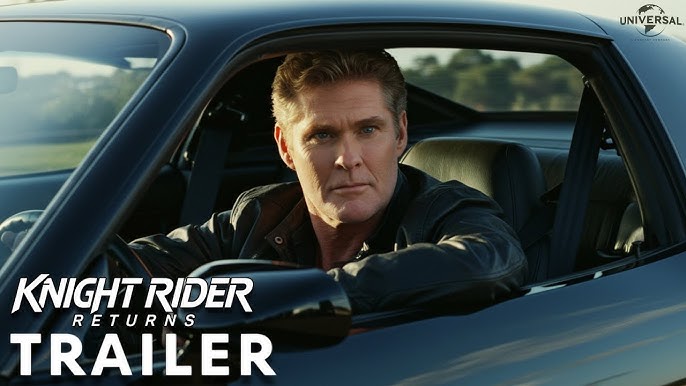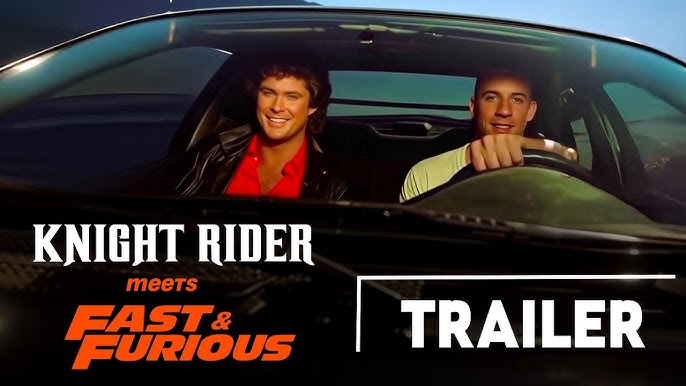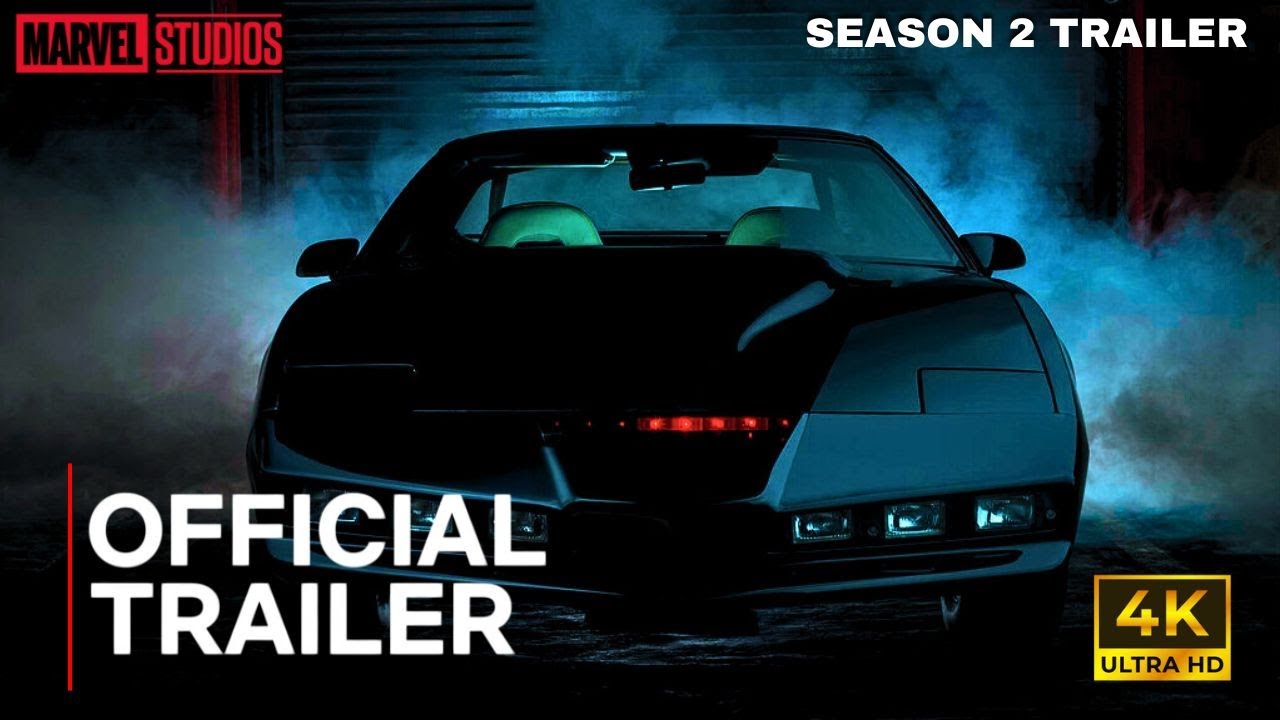Knight Rider 2 (2025)

Knight Rider 2 (2025) – An In-Depth Look at the Return of a Classic
The legacy of Knight Rider is undeniable. First created by Glen A. Larson in the early 1980s, the original series became a cultural phenomenon, blending science fiction, action, and crime drama in a way that captured the imagination of viewers across the globe. It wasn’t just a show about a talking car; it was about the unyielding pursuit of justice, the bond between man and machine, and the triumph of good over a world filled with corruption and danger. Thirty-five years after its initial debut, Knight Rider 2 (2025) brings that legacy back to life, delivering both nostalgia and a fresh take on the story for a modern audience.
The series picks up decades after the events of the original show, with Michael Knight, played once again by David Hasselhoff, returning to a world that has changed dramatically. Crime and corruption have evolved, becoming more sophisticated, more hidden, and more dangerous than ever before. Technology has advanced exponentially, creating new threats that require innovative solutions. In this new landscape, the role of Michael Knight is more critical than ever. He is no longer just a former cop seeking to right wrongs; he has become a symbol of justice in a society that often seems to have forgotten the meaning of integrity. Michael is the quintessential hero: brave, resourceful, and fiercely determined to use his skills and his intellect to make a difference.
Central to Michael Knight’s crusade is KITT, the Knight Industries Two Thousand. This isn’t merely a car; it is a revolutionary artificial intelligence-powered vehicle designed to anticipate danger, provide critical tactical support, and, in classic Knight Rider style, deliver witty commentary in response to Michael’s actions. KITT represents the perfect fusion of human intuition and machine precision. Equipped with advanced sensors, turbo-boost capability, near-impenetrable armor, and unparalleled speed, KITT is far more than a vehicle—he is a partner, a friend, and an essential part of Michael’s mission. The dynamic between Michael and KITT remains the heart of the show. It is a relationship built on trust, mutual respect, and an almost human understanding of one another’s abilities and limitations. The clever banter between Michael and KITT, combined with the tension and excitement of high-stakes missions, provides both dramatic and comedic elements that keep the audience engaged.
Supporting Michael is Devon Miles, portrayed once again by Edward Mulhare. Devon serves as both a mentor and a strategic guide. He represents the institutional knowledge and experience of the secret foundation that backs Michael’s endeavors, offering wisdom and perspective that help Michael navigate the complex criminal underworld. Devon’s presence is vital, providing a grounding influence for Michael’s sometimes impulsive approach to justice. His calm demeanor and methodical planning complement Michael’s bold actions, creating a balance that ensures each mission is executed with precision and care.
The criminal elements in Knight Rider 2 are more sophisticated than in the original series. Gone are the days of simple heists and easily identifiable villains. Today’s adversaries are often multinational, technologically adept, and morally ambiguous. They exploit modern systems of finance, security, and governance to carry out their schemes, making them both formidable and unpredictable. The show’s writers have made a conscious effort to update the threats in a way that reflects contemporary concerns, from cybercrime and data theft to corporate malfeasance and political corruption. Each episode presents a new challenge for Michael and KITT, testing not only their physical capabilities but also their intelligence, strategy, and ethical judgment.
The narrative structure of Knight Rider 2 balances episodic adventures with an overarching storyline. While each episode features a self-contained mission, there are threads of continuity that weave a larger story, involving the evolution of the foundation, Michael’s personal journey, and the ongoing battle against organized crime. This approach allows the series to cater to both new viewers, who can enjoy a single episode without prior knowledge, and long-time fans, who will appreciate the deeper exploration of the characters and their history. The writing consistently emphasizes themes of loyalty, courage, and the moral imperative to stand up against injustice.
Action sequences remain a cornerstone of the series. Knight Rider 2 excels at combining thrilling car chases with high-tech gadgets and daring stunts. KITT’s turbo-boost jumps, evasive maneuvers, and combat capabilities are executed with cinematic flair, keeping viewers on the edge of their seats. The use of cutting-edge visual effects ensures that these sequences feel realistic and grounded, even as they showcase extraordinary feats. Every chase, every confrontation, and every high-risk mission is meticulously choreographed to highlight the synergy between Michael and KITT. The result is a series that successfully blends adrenaline-pumping action with character-driven storytelling.
One of the most compelling aspects of Knight Rider 2 is the continued exploration of the moral and ethical dilemmas faced by those who fight for justice in a complex world. Michael is often confronted with situations where the right course of action is not immediately clear. He must weigh the consequences of his decisions, consider the safety of innocents, and navigate a legal system that is not always on his side. These dilemmas provide depth to the narrative, ensuring that the series is more than just a showcase of action and technology—it is a thoughtful examination of heroism, responsibility, and the human condition.
The interplay of technology and humanity is also a central theme. KITT, as an AI, represents the potential of technology to aid humanity, but also raises questions about trust, autonomy, and the ethical use of advanced machines. The dialogue between Michael and KITT often delves into these issues, with KITT serving as both a practical tool and a philosophical foil. Their conversations explore the boundaries of artificial intelligence, the nature of free will, and the essence of human judgment. This thoughtful engagement with technology sets Knight Rider 2 apart from other action series, giving it a cerebral dimension that complements its high-octane excitement.
Visually, the series is stunning. Cinematography emphasizes the sleek lines and capabilities of KITT, as well as the urban and rural landscapes where missions unfold. From the glittering cityscapes to the remote, dangerous locales of the criminal underworld, each setting is carefully designed to enhance the story’s tension and aesthetic appeal. Lighting, camera angles, and special effects are all employed to create a sense of immediacy and immersion, drawing viewers into the world of Michael Knight and his extraordinary partner.
The musical score of Knight Rider 2 pays homage to the iconic themes of the original series while introducing new compositions that heighten suspense and excitement. The familiar motifs trigger nostalgia, while the new arrangements keep the soundtrack fresh and relevant for a modern audience. Music is used strategically to underscore key moments, from heart-pounding chases to quiet, reflective scenes that explore character development and emotional stakes.
One of the series’ strengths is its commitment to character development. Michael Knight is portrayed not just as a hero but as a complex individual with vulnerabilities, doubts, and a personal history that shapes his worldview. Episodes often explore his relationships with colleagues, friends, and the people he seeks to protect, adding layers of emotional resonance to the action. Similarly, KITT is not merely a machine; he exhibits personality, wit, and loyalty, creating a dynamic that transcends the typical hero-vehicle trope. Devon Miles, meanwhile, provides a stabilizing presence, reflecting the wisdom of experience and the nuanced understanding of an organization dedicated to justice. These well-developed characters make the series compelling on both an emotional and narrative level.
Knight Rider 2 also pays careful attention to continuity and legacy. Fans of the original series will recognize familiar faces, recurring themes, and signature technology, all of which serve to honor the past while moving the story forward. At the same time, new viewers are introduced to a richly realized world, filled with intricate plots, engaging characters, and thrilling adventures. The series strikes a delicate balance, respecting its heritage without becoming trapped by it, ensuring that the story remains relevant and exciting for a new generation.
In addition to its entertainment value, Knight Rider 2 subtly addresses social and cultural issues. Episodes explore the impact of crime and corruption on communities, the challenges faced by law enforcement in a technologically advanced society, and the ethical responsibilities of those who wield power. By weaving these themes into the narrative, the series invites viewers to consider the broader implications of justice, technology, and human behavior. This thoughtful integration of real-world concerns enhances the series’ depth and relevance, making it more than just a nostalgic action show.
Another notable feature is the attention to technological plausibility. While KITT possesses extraordinary capabilities, the series grounds its depiction of technology in real-world scientific principles and contemporary advancements. This approach lends credibility to the story and allows viewers to suspend disbelief more readily. The combination of futuristic tech with relatable human drama creates a compelling contrast that is both entertaining and intellectually engaging.
The series also excels in pacing. Episodes are structured to maintain tension and engagement, balancing high-energy action sequences with quieter, character-driven moments. The interplay of suspense, humor, and emotional depth ensures that viewers remain invested in both the plot and the characters. Each mission is crafted to deliver a satisfying arc, with stakes that escalate logically and outcomes that resonate with the series’ overarching themes.
Casting is another area where Knight Rider 2 shines. David Hasselhoff reprises his iconic role with energy, charm, and gravitas, bringing authenticity and continuity to the character of Michael Knight. Edward Mulhare’s return as Devon Miles adds gravitas and wisdom, reinforcing the series’ connection to its roots. Richard Basehart’s voice work for KITT provides the perfect combination of intelligence, humor, and authority, maintaining the car’s role as both a tool and a character in its own right. The chemistry among the main cast is palpable, contributing to the series’ enduring appeal.
In conclusion, Knight Rider 2 (2025) is a remarkable revival of a beloved classic. It successfully combines the elements that made the original series iconic—compelling characters, thrilling action, and cutting-edge technology—with contemporary themes, sophisticated storytelling, and modern cinematic techniques. The show honors the legacy of Michael Knight and KITT while expanding their world to explore new challenges, deeper moral questions, and the evolving nature of justice in a complex society.
For fans of the original series, Knight Rider 2 is a nostalgic journey that rekindles the excitement, wit, and heroism that defined the franchise. For new viewers, it is a thrilling, thought-provoking, and visually stunning series that stands on its own merits. Through its exploration of the human-machine bond, ethical dilemmas, and the enduring fight against crime and corruption, the series offers both entertainment and reflection. Michael Knight and KITT continue to prove that courage, ingenuity, and integrity can prevail, even in the most challenging circumstances, reminding audiences that heroism is timeless, and that sometimes, the bond between a man and his machine can change the world.
Knight Rider 2 is not just a show; it is a celebration of action, adventure, and the enduring human spirit. It is a testament to the power of storytelling and technology, to the resilience of heroes, and to the timeless appeal of a man and his car standing against the darkness. With gripping action, memorable characters, and thought-provoking narratives, it cements its place as both a worthy successor to the original series and a standout addition to contemporary action television.









